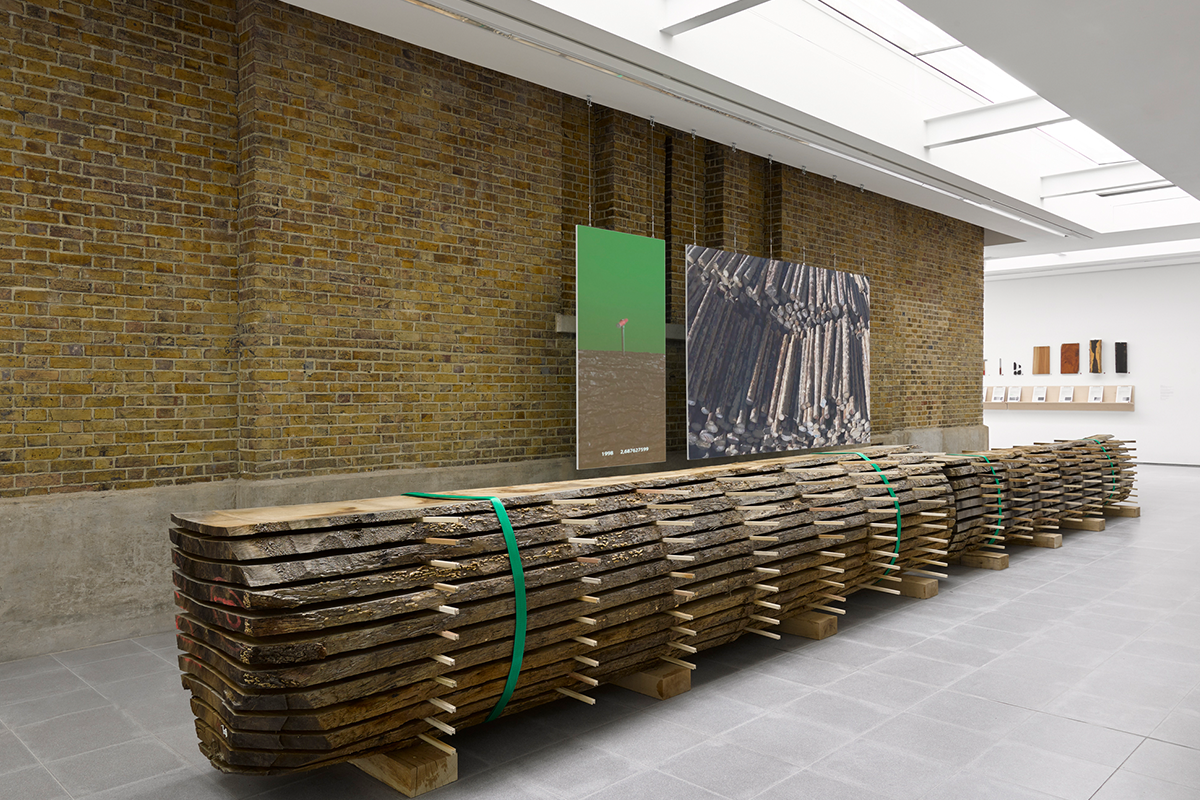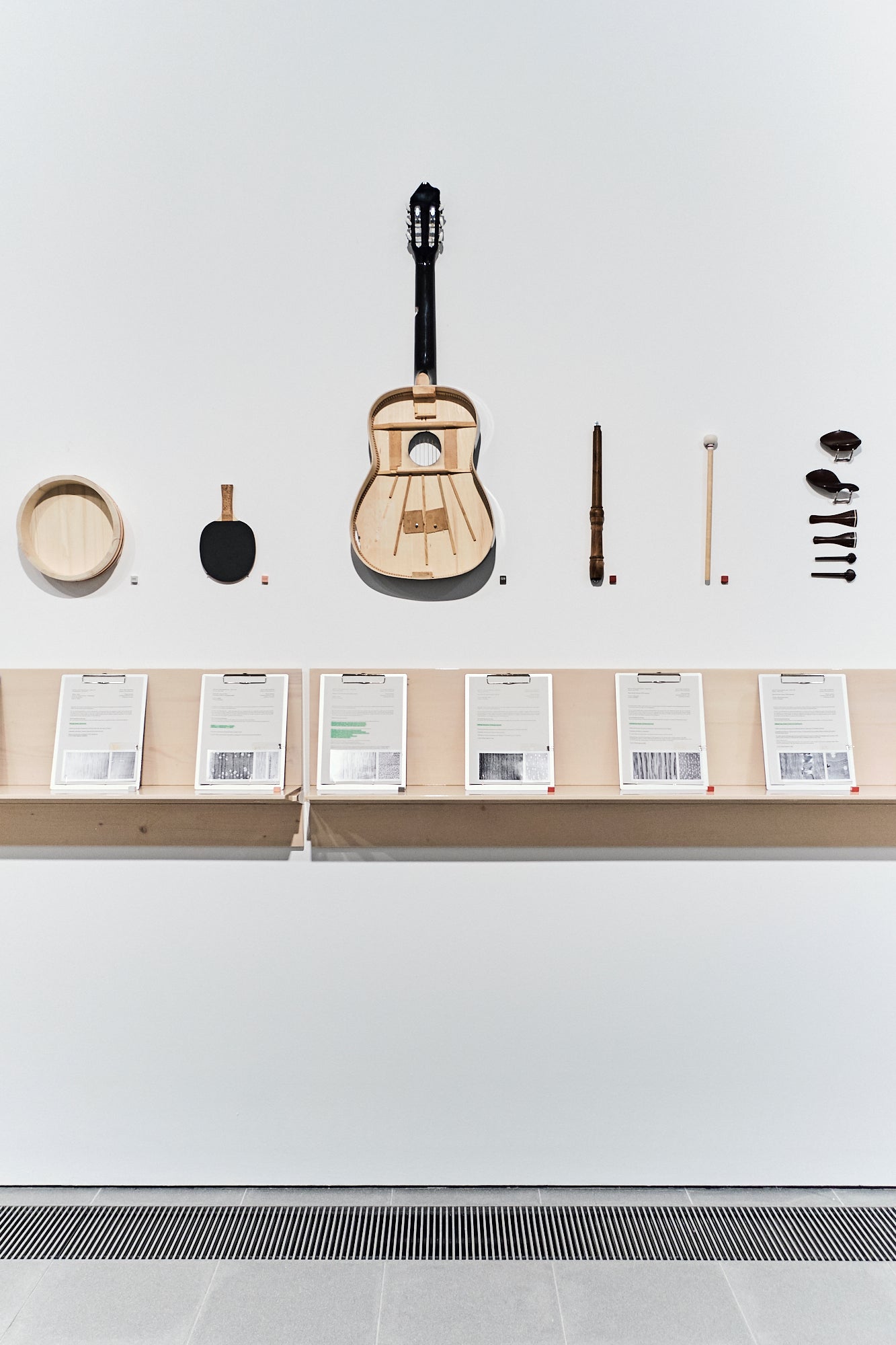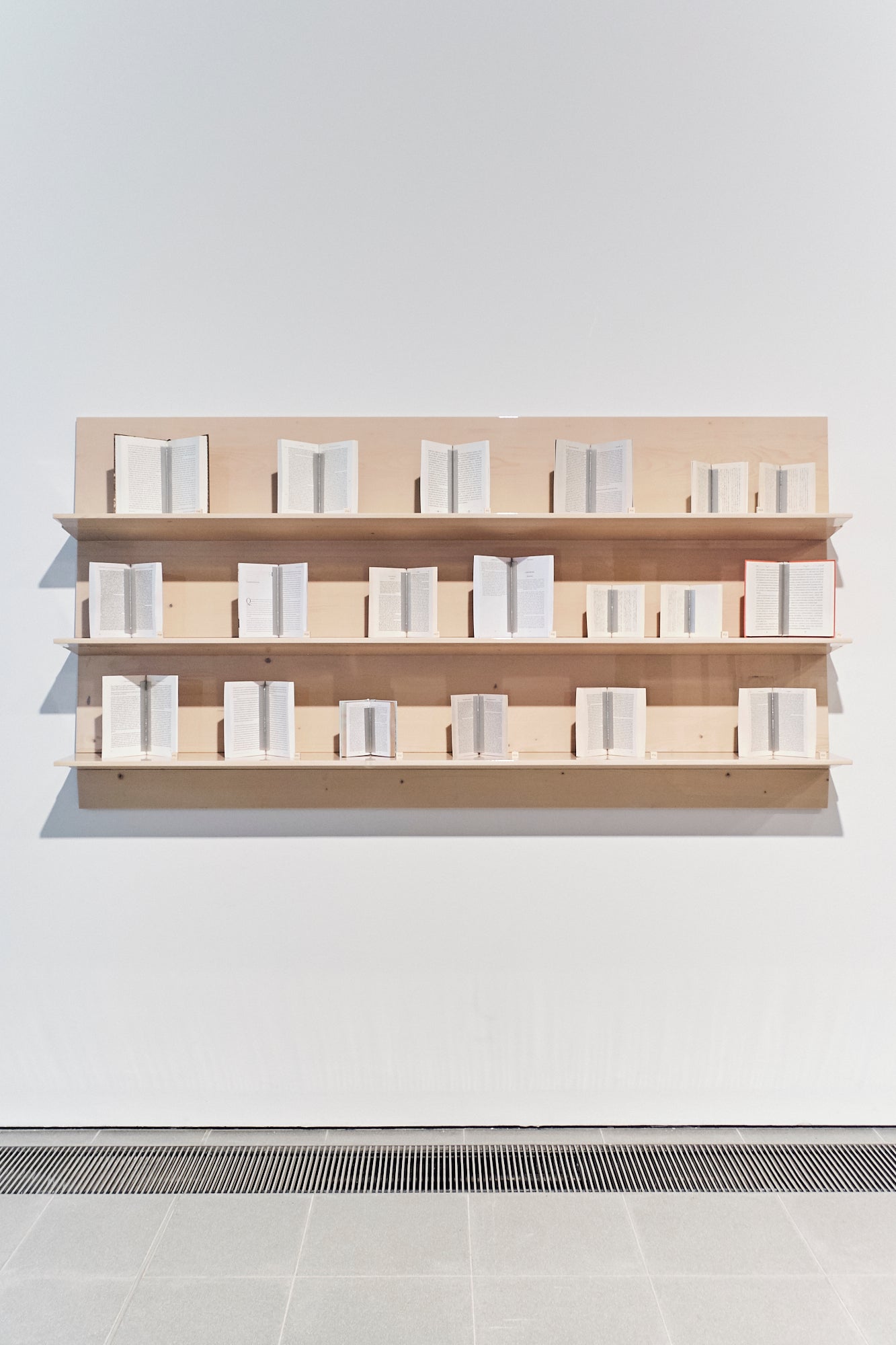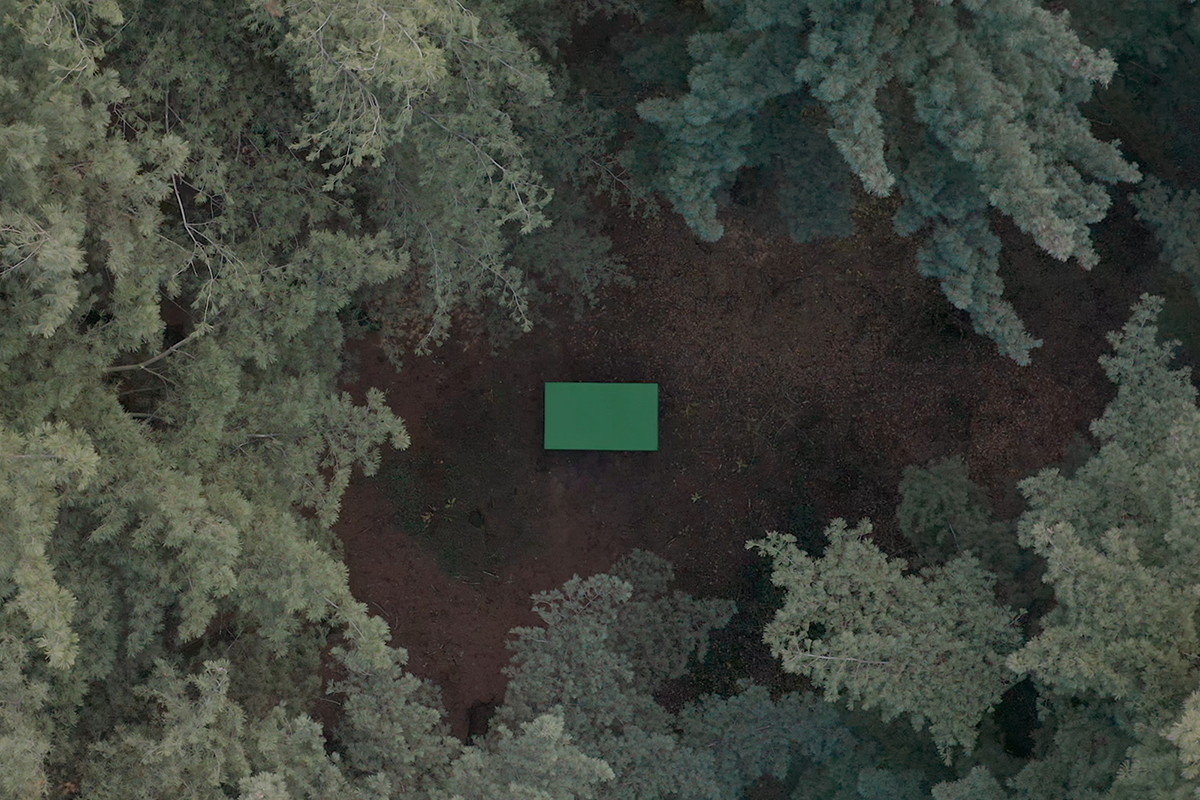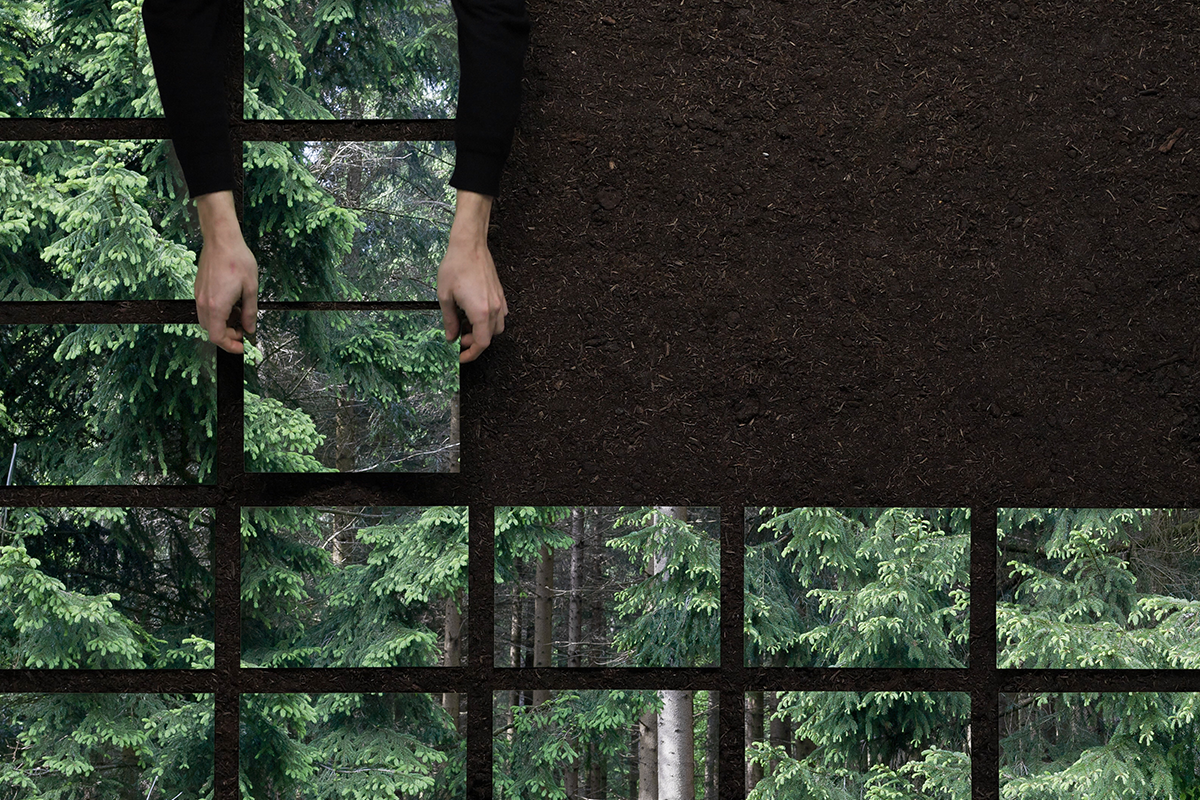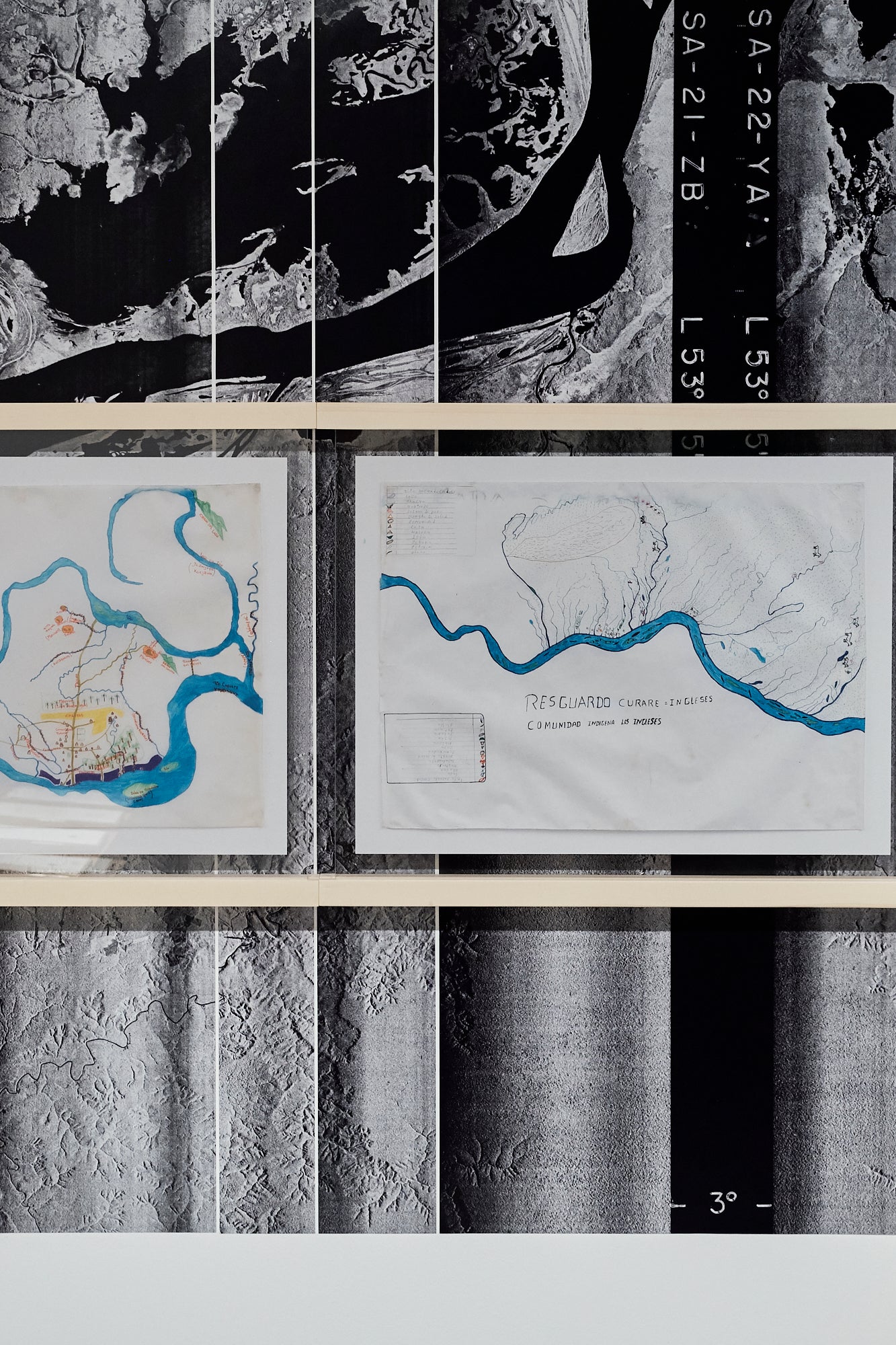Every single material that is chosen for a design production has effects, from its origin to its application. The Cambio project invites us to reflect on the change generated by the industries involved in the production of one of the most sought-after materials in the world: wood.
Studio Formafantasma, formed by Simone Farresin and Andrea Trimarchi, is the design firm behind the research and artistic production of Cambio. The duo is characterized by their experimental approach to design, where relationships between wood, culture, and sustainability are key for their production. Serpentine Galleries commissioned the research as part of their goals, including to add narratives that link art and design to ecology. The name Cambio refers to the evolution of timber trade, to how its expansion is hard to regulate, and the great effects it has on the biosphere. Simultaneously, it refers to cambium, the layer that produces growth rings inside a tree and the exterior bark. The exhibition took this shape as a metaphor, placing the information obtained from the research at the center and the industry’s distribution study cases on the outside.

The first contact visitors have with the exhibition is the great volume of a tree cut into plates and a narrative that shows the process from being alive to becoming an object. The fragrances in the soil and woods developed by olfactory artist Sissel Tolaas, complete the whole immersive experience. Accompanied by pictures and screenings of monoculture forests after a rainstorm, a reassessment of the management of our resources is offered, “as a reminder of all of the things that will be at risk if we lose this environment”.
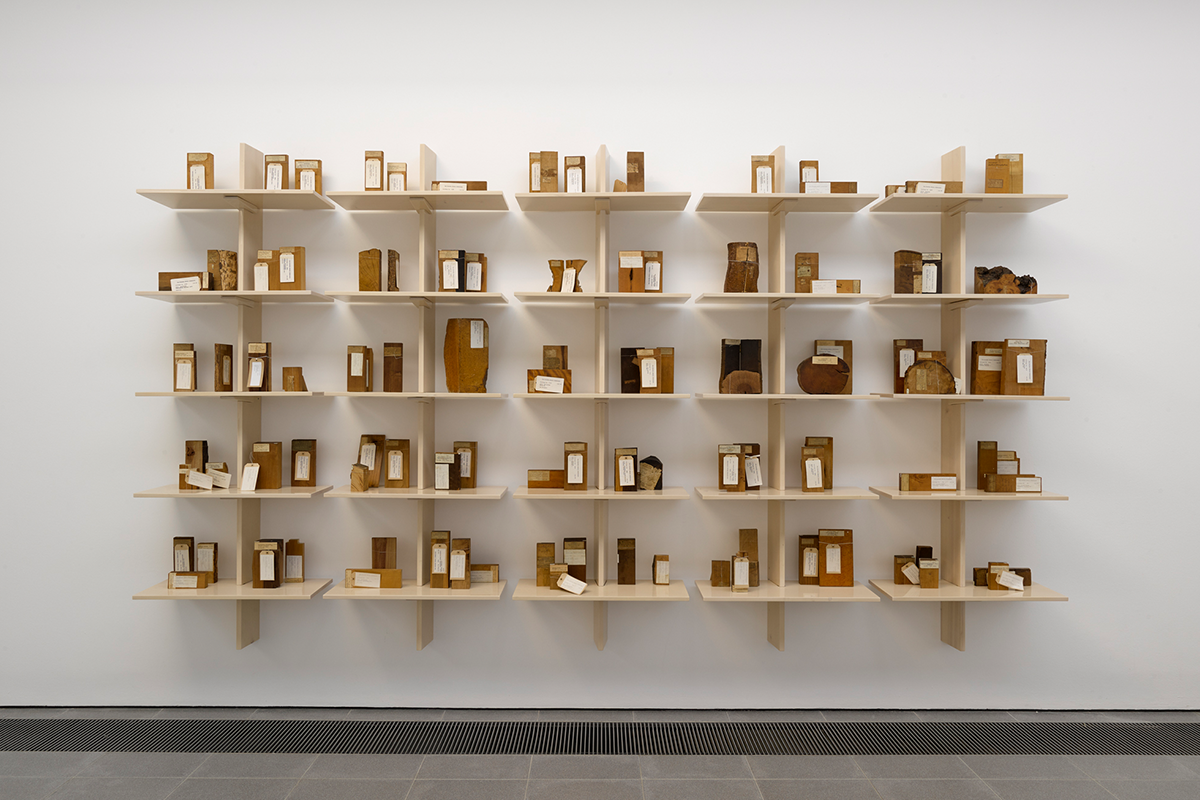
The following sections criticize the choice of materials in mass-produced industrial design. Pieces like a tower of wooden stools question if the life of the object justifies deforestation of trees whose growth took more than one century. The objects from the Kew Gardens’ Botanical Economic Collection are part of the catalogue featured in the Great Exhibition in 1851, where the wide variety of wood encouraged designers to use these species, regardless of their place of origin. At the same time, they point at the influence of this notion in rendering programs offering a wide range of materials and which encourage choices with no other criteria than aesthetics.
The research, which took over a year and a half, resulted in a large database including items, maps, and interviews with professionals and offers a perspective towards resources, like parts of complex ecosystems. Its final reflections are supported on a video showing the inside of a tree and the narration of a text by philosopher and botanist Emanuele Coccia. His story speaks about the undeniable link between the forest and humans, due to the dependency we have as species. The material exhibited and the information resources gathered have the purpose of allowing the rethinking of the impact on design practices and the structure of the wood industry in a global scale.
Formafantasma team:
Riccardo Badano, Simón Ballen Botero, Gregorio Gonella, Jeroen Van De Gruiter, Johanna Seelemann, Peter Sorg
Exhibition curated by:
Rebecca Lewin, Curator, Exhibitions and Design Natalia Grabowska, Assistant Curator
With:
Marco Carrer, University of Padua, Padua
Emanuele Coccia, École des Hautes Études en Sciences Sociales, Paris
Vanessa Richardson, Environmental Investigative Agency, London
Gaia Amazonas, Bogotá
Het Nieuwe Instituut, Rotterdam
Magnifica Comunita di Fiemme, Cavalese Naturalis Biodiversity Centre, Leiden
Philipp Pattberg Vrije Universiteit, Amsterdam Royal Botanic Gardens, Kew, London
Royal Museum of Central Africa, Tervuren Thünen Institute, Hamburg
Sissel Tolaas, Smell Researcher and Artist
Victoria and Albert Museum, London

